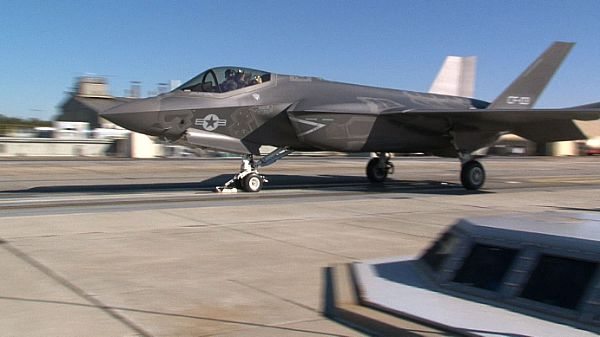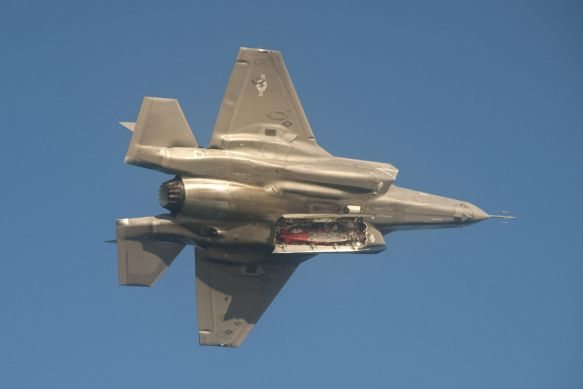A century after 1st Lt. Alfred A. Cunningham took his first flight in 1912, Marine Corps aviation introduced the F-35B Lightning II aircraft into its fleet. The short takeoff vertical landing variant combined with fifth generation capabilities is a breakthrough in itself, matching the importance of the first Marine aviator and starting a new chapter in Marine Corps aviation history.
2nd Marine Aircraft Wing’s Marine Fighter Attack Training Squadron 501 hosted the ceremony inducting the F-35B Lightning II multirole, joint strike fighter, into the Marine Corps aviation arsenal at Eglin Air Force Base, Fla., Feb. 24 at 2 p.m.
Gen. Joseph Dunford, the assistant commandant of the Marine Corps, stated at the rollout ceremony that for the first time in aviation history, the most lethal fighter characteristics came together on a single platform. A list of the aircraft’s abilities include supersonic speed, radar-evading stealth, extreme agility and short takeoff vertical landing capability.
“It’s innovation like that represented here today which has kept Marine aviation ready and relevant for the last 100 years,” said Dunford.
The new aircraft was on display at the VMFAT-501 hangar for military leaders, government officials and other guests to view.
VMFAT-501 will also be the first Marine Corps unit to begin training for and with the F-35B. Eglin has already constructed the F-35 Academic Training Center and in the near future will begin training, throughout all military branches, maintainers and pilots on the aircraft.
“501 is on the forefront of one of the most significant transition periods Marine aviation has ever known,” said Dunford. “Certainly one of the most important in a long time. Maybe since the introduction of the helicopter.”
“We are trying not to waste the time we’ve been given,” said Col. Arthur Tomassetti, the vice commander of the 33rd Fighter Wing, which is responsible for pilot and maintainer training on the F-35 A, B and C models. “We hope that people will be pleased and proud to see the time we’ve been given to prepare operational readiness has been used to the advantage.”
Tomassetti said that VMFAT-501 was approaching the training for the aircraft with a crawl-walk-run approach, and were currently between crawl and walk. He explained the importance of taking their time learning the aircraft and feeding off the constructive feedback from outside sources.
“We could accelerate training,” said Tomassetti. “But then we might miss things. It’s better to just get it right the first time.”
The fifth generation aircraft is slated to replace the Marine Corps’ F/A-18 Hornet, AV-8B Harrier and EA-6B Prowler, reducing maintenance costs while ensuring the Marine Corps’ tactical air dominance.
Maj. Gen. Jon Davis, the commanding general of 2nd MAW, said that today was a very exciting day for the Marine Corps and it’s been 60 years in the making. Davis explained that the aircraft means something for more than just the wing side but it is there for the infantrymen as well.
“Thank you all for being witness to this historic event,” said Dunford. “Know that the spirit of innovation within Marine aviation is alive and well and lives on today in every Marine before you. It will continue to live on here with the Warlords of VMFAT-501 as it has in every clime and place for the last 100 years of Marine aviation. May the next 100 be as memorable.”










